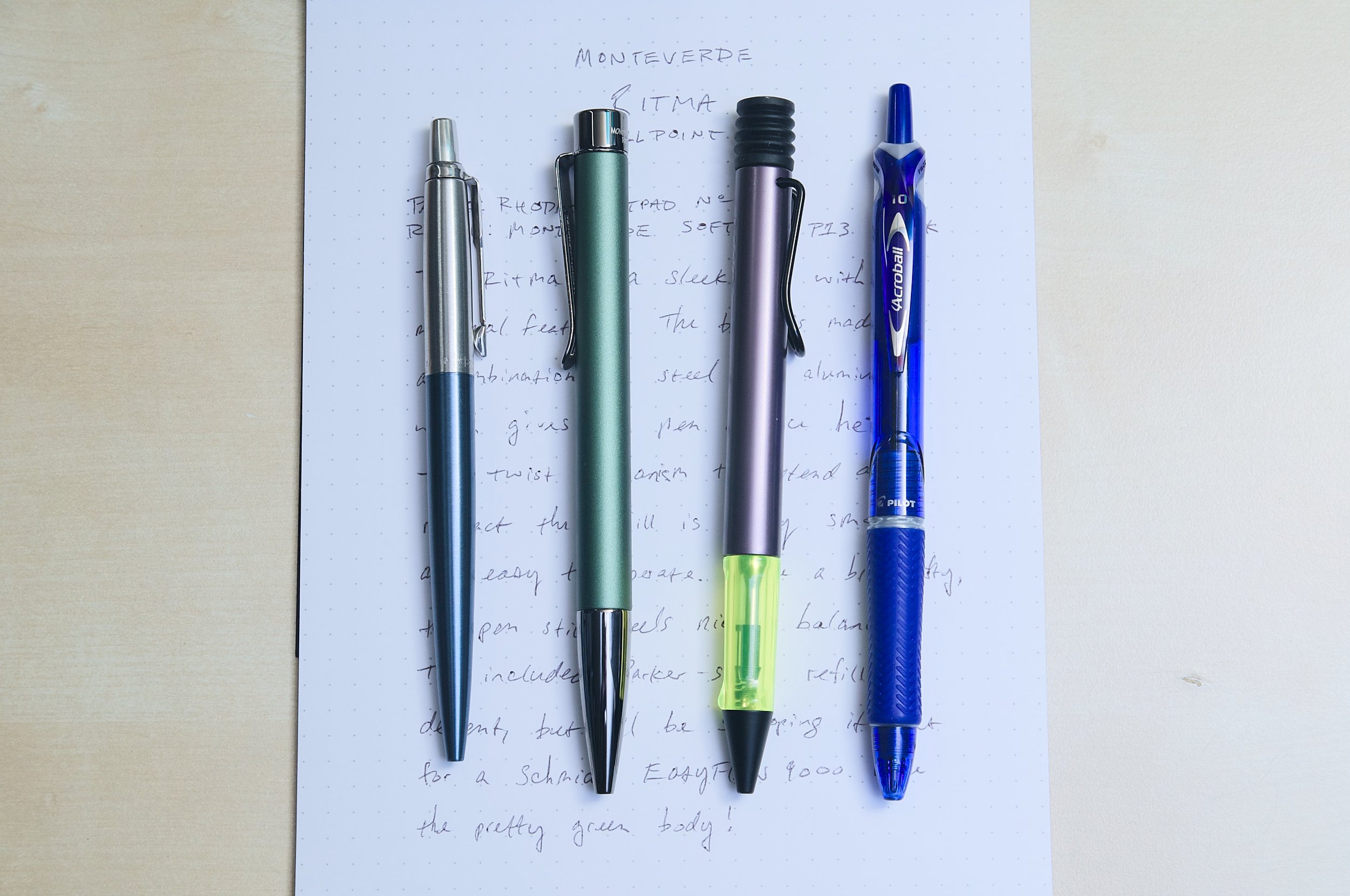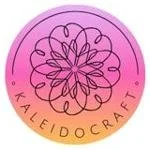(Jeff Abbott is a regular contributor at The Pen Addict. You can find more from Jeff online at Draft Evolution and Twitter.)
Continuing in my personal quest to collect as many green things as I can this year, I've been using the Ritma from Monteverde as my pen for taking notes at my desk during the workday. The Ritma is a minimal design that looks great and is easy to use.
It doesn't matter how many amazing fountain pens I have in my collection — I always have room in my daily kit for a humble ballpoint pen. They don't write as well or produce anywhere near the level of beautiful and nuanced lines as my fountain pens, but they're so simple. They utilitarian in a way that fountain pens often struggle. They require little maintenance and can take a lot of punishment. What they gain in utilitarianism, they certainly lose in style and customization.
For a ballpoint to be comfortable for me to use, I'm looking for a few things: a good refill, a comfortable grip, and a balanced weight. At first glance, I didn't think the Ritma would be comfortable to use, but I let the pretty green color convince me to give it a try anyway — and I'm glad I did! It's actually a really comfortable pen to use.
The nose of the pen is shiny and looks like it would be a fingerprint magnet, but it doesn't actually attract a lot of fingerprints. And, when I see a shiny surface finish like this, I automatically assume that it will be slippery to handle and won't work well for writing more than a few words before I get annoyed with the unstable grip. This isn't the case with the Ritma. Whatever finish Monteverde used for the grip are is fantastic. It provides plenty of grip and friction even after writing for a while. This is good news because the nose/grip section is long enough that most people will only grip it by this area instead of the more textured barrel area.
The other factor that makes this pen comfortable to use is the balanced weight. It's not a super lightweight pen — it has some heft, but not so much to cause fatigue after a short period. When holding the pen, it feels like the center of gravity is close to the grip area, with just enough weight at the top of the pen to provide a nice balance when writing so that you have excellent control of the tip. I was surprised by how well it balanced in my hand once I held in my normal writing grip. According to the specifications, the pen is a combination of steel and aluminum. I'm guessing the grip is steel, and the outside of the body is aluminum. The steel materials add an appropriate amount of weight in all the right spots.
To achieve a minimal look, the Ritma uses a twist mechanism to control the refill extension. A half rotation of the grip section is all it takes to extend or retract the refill. You can do this one-handed, but it requires you to do some minor hand gymnastics to shuffle the pen orientation back and forth to operate the twist mechanism and then return to writing position. I normally use both hands to open/close the pen, but I wish it was a bit easier to operate with one hand. This is where the click mechanism wins in use, but they don't look as sleek as this one!
Writing with the Ritma is a great experience. The balance is great for my standard three-finger grip, and I don't feel fatigue after writing a couple of pages non-stop. The refill that ships with the Ritma is a black Monteverde P1, but the pen will accept any Parker-style refill. There are many, many fantastic options in this format, which is another win for the Ritma. You can easily swap in another ballpoint refill (I prefer the Schmidt EasyFlow 9000) or even a gel refill. While the Monteverde refill is good and reliable, I prefer the Schmidt refill because it's smoother and darker. Again, it's great that the pen accepts such a ubiquitous refill so that you can swap in your favorite refill if you want.
The Monteverde Ritma is $36, and this feels like a good price for what you get. It feels like a high-quality product when you handle it and write with it, and it looks great too. It's subtle enough to be at home in a professional setting, but it's also sturdy enough to be used in a portable setup with no problems. If you like the design, then this is a great ballpoint pen to pick up for yourself or as a gift. And, if you don't like the green there are several other colors to choose from too!
(Vanness Pens provided this product at a discount to The Pen Addict for review purposes.)
Enjoy reading The Pen Addict? Then consider becoming a member to receive additional weekly content, giveaways, and discounts in The Pen Addict shop. Plus, you support me and the site directly, for which I am very grateful.
Membership starts at just $5/month, with a discounted annual option available. To find out more about membership click here and join us!

























